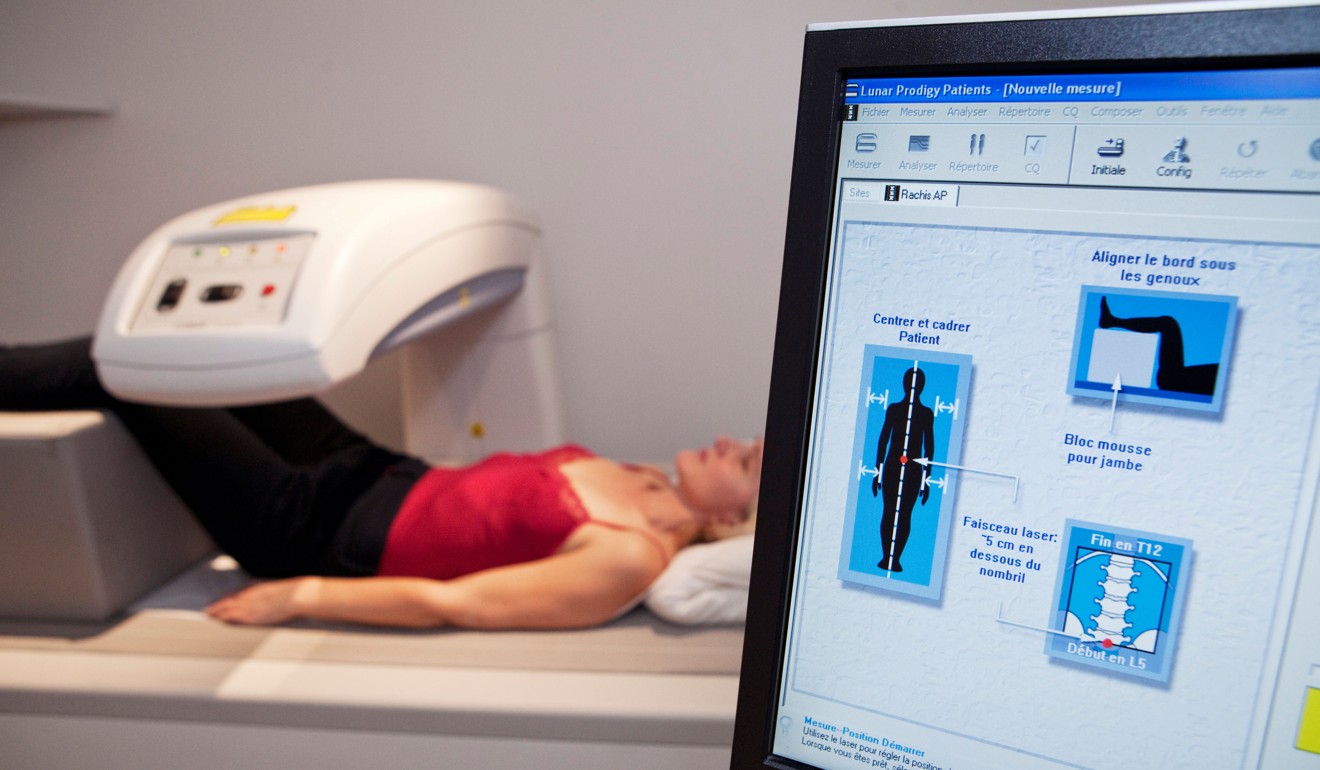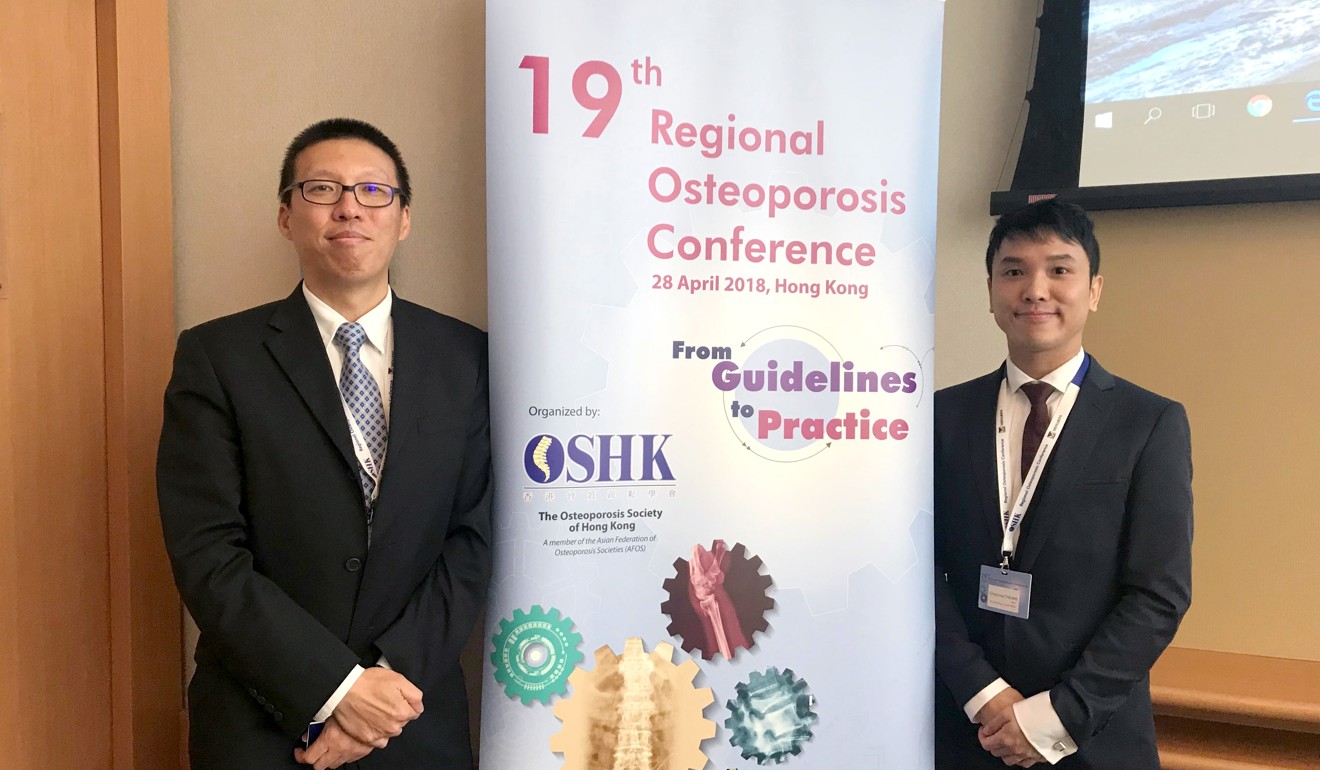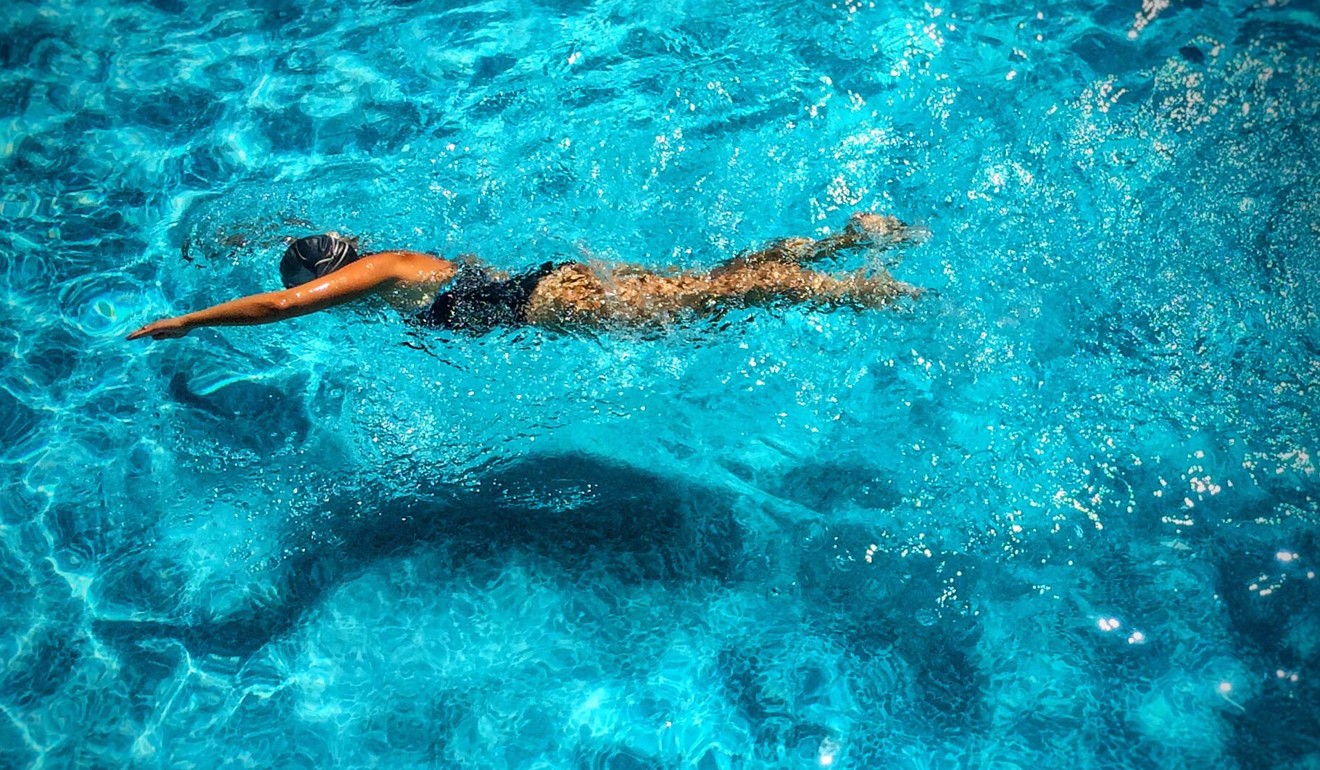
How calcium, vitamin D can save you from broken bones: osteoporosis and osteopenia explained
- If your bones are weaker than normal for your age, you could have osteopenia, more common and less serious than osteoporosis
- Risk factors include being female, mature, having a low body weight and a diet low in calcium or vitamin D

When I lost my balance and tipped against an upholstered seat, I never imagined I’d break a rib. But I did. The pain was instant.
I let it heal and didn’t think about it until a few months later when I registered with a gynaecologist and had to fill in a new-patient form. Have you recently suffered any bone fractures? I ticked the box.
What did you break? the doctor asked when he saw me. A rib, I replied, and explained how.
I shouldn’t be breaking bones that easily at my age (50), he said, but it is not uncommon that women my age do. He sent me for a bone density scan, a special type of X-ray that measures bone mineral density.

The scan revealed that at the neck of my femur, my hip, the T score was -1.4; my spine read -1.6. I looked blank when the doctor delivered the numbers. It means you are suffering with osteopenia, he said.
Dr Eddie Chow Siu-lun, past president of the Osteoporosis Society of Hong Kong, describes the condition, and how it differs from osteoporosis.
He explains that osteoporosis is a disease characterised by low bone mass and deterioration of bone tissue, that makes bones fragile and more likely to break.

To find out whether someone has osteoporosis or ostopenia, doctors measure the mass, or bone mineral density, of your hip bones and lumbar vertebrae in the lower back, Chow says.
If the BMD is more than 2.5 points below the mean BMD of a young woman, you have osteoporosis. If the rate of variation (or standard deviation) is between -1 and -2.5, you have ostopenia, he explains.
Both conditions are common. According to the National Osteoporosis Foundation, about 54 million people in the United States have osteoporosis.
Many more are estimated to have osteopenia and are at increased risk of developing osteoporosis.

There are a number of risks associated with developing osteopenia and osteoporosis, says Chow. As he lists them, I tick them off: female (tick); Caucasian (tick); low body weight or low BMI (tick); advanced age (hmmm, admittedly advancing, tick); post menopausal (tick); low dietary calcium (nope, quite the opposite); smoking (No!); too much coffee (ummm, tick).
Some diseases, Chow continues, predispose a person to suffering a loss of bone mass. They include:
- Endocrine disorders such as hyperthyroidism (overactive thyroid gland) and hypogonadism (in which the body produces too little of the male hormone testosterone)
- Cushing’s syndrome (a disease of the adrenal gland caused by excess secretion of the hormone cortisol)
- Gastrointestinal disorders
- Inflammatory conditions like rheumatoid arthritis
- Eating disorders and severe vitamin D deficiency (which can result from being bedridden and getting insufficient sunshine exposure)
- Bone marrow disorders (leukemia, anaemia and overproduction of bone marrow cells) and tumours (both benign and cancerous)
One in three women are at risk, and one in five men. More women than men suffer from osteoporosis or osteopenia because women’s bones are thinner and their skeletons smaller.
According to the Institute of Bone Health, studies indicate that hip fractures in Hong Kong and China increased by 300 per cent from the 1960s to the 1990s, but slowed in the early 2000s, probably due to awareness and the increased use of hormone replacement therapy for women; taking oestrogen supplements after menopause supports bone health.

Bone mass builds up rapidly during childhood and adolescence, and reaches its peak when we are in our mid-30s. It begins to decline when we are about 40, especially in women as they near menopause due to a fall-off in oestrogen production.
A study published by the Institute of Bone Health suggests that Hong Kong residents are especially at risk of osteopenia and osteoporosis for a number of reasons.
Sedentary lifestyles prevail in the city, with the average person exercising outdoors for just one hour a week (limited sun exposure reduces levels of vitamin D and calcium) being just an hour per week, and residents’ calcium intake is low at just 400mg/day; the National Osteoporosis Foundation in the US recommends around three times that amount, or between 1,000mg and 1,200mg a day.
That I was a regular swimmer did not impress my doctor. “Weight-bearing exercise is what you need. Swimming is not weight bearing – good for the heart, the waist, but walking would be better for your bones.”

The US non-profit organisation American Bone Health [americanbonehealth.org], based in Raleigh, North Carolina, teaches people to build and keep strong and healthy bones for life.
It observes that the “three pillars” of a strong skeleton are a calcium-rich diet; vitamin D, the sunshine vitamin, which aids the absorption of calcium; and weight-bearing exercise, such as walking, which has especially positive effects on the hip bone (the one that is most prone to fracture as we age). Walking also improves muscle strength and balance, which helps to prevent the falls that can cause fractures.
Bone density changes slowly, so a walking regime must be sustained. For it to be useful, according to one of the most comprehensive studies conducted on walking and hip fracture prevention in women, you need to be mindful of walking volume – that is, you need to walk more, to walk faster, and to take longer strides.
This was associated with reductions in hip fracture risk of 40 to 60 per cent, according to the Nurses’ Health Study, based on an analysis of 61,200 postmenopausal women aged 40 to 77 years, all registered nurses in 11 US states, who did not have a diagnosis of cancer, heart disease, stroke or osteoporosis when the 12-year review began in 1986.
Osteoporosis, which has no symptoms until you break a bone, says Chow, “is mainly an indicator of the risk of having fragility fractures. And the risk of fragility fractures is a result of many factors; osteoporosis is just one of them and may be reduced by drug and non-drug measures.”
As much as bone health is important, so is body balance to protect bone health: keep fit and strong to avoid the falls that lead to fractures.

Dos and don’ts to prevent and treat osteopenia and osteoporosis
DO be mindful of calcium and vitamin D intake – both are essential nutrients for peak bone mass. Foods high in calcium include green leafy vegetables such as broccoli, cabbage and okra, sesame seeds, dried fruit such as raisins, prunes, figs and apricots, soy foods, beans, peas and lentils, almonds, and fortified soya, rice, oat and fruit drinks.
Aim for around 1,000mg of calcium daily and 10-20 micrograms of vitamin D if you’re under 50, 20-25 micrograms if you’re over 50. Get it from sunlight exposure, food or supplements.
DO build weight-bearing exercises into your daily routine, that is, exercises which require your bones to bear your body weight, such as brisk walking, tai chi, jogging, dancing and tennis.
DON’T get too fat – or too thin.
DON’T smoke, avoid carbonated drinks because of the caffeine overload, and limit alcohol intake.